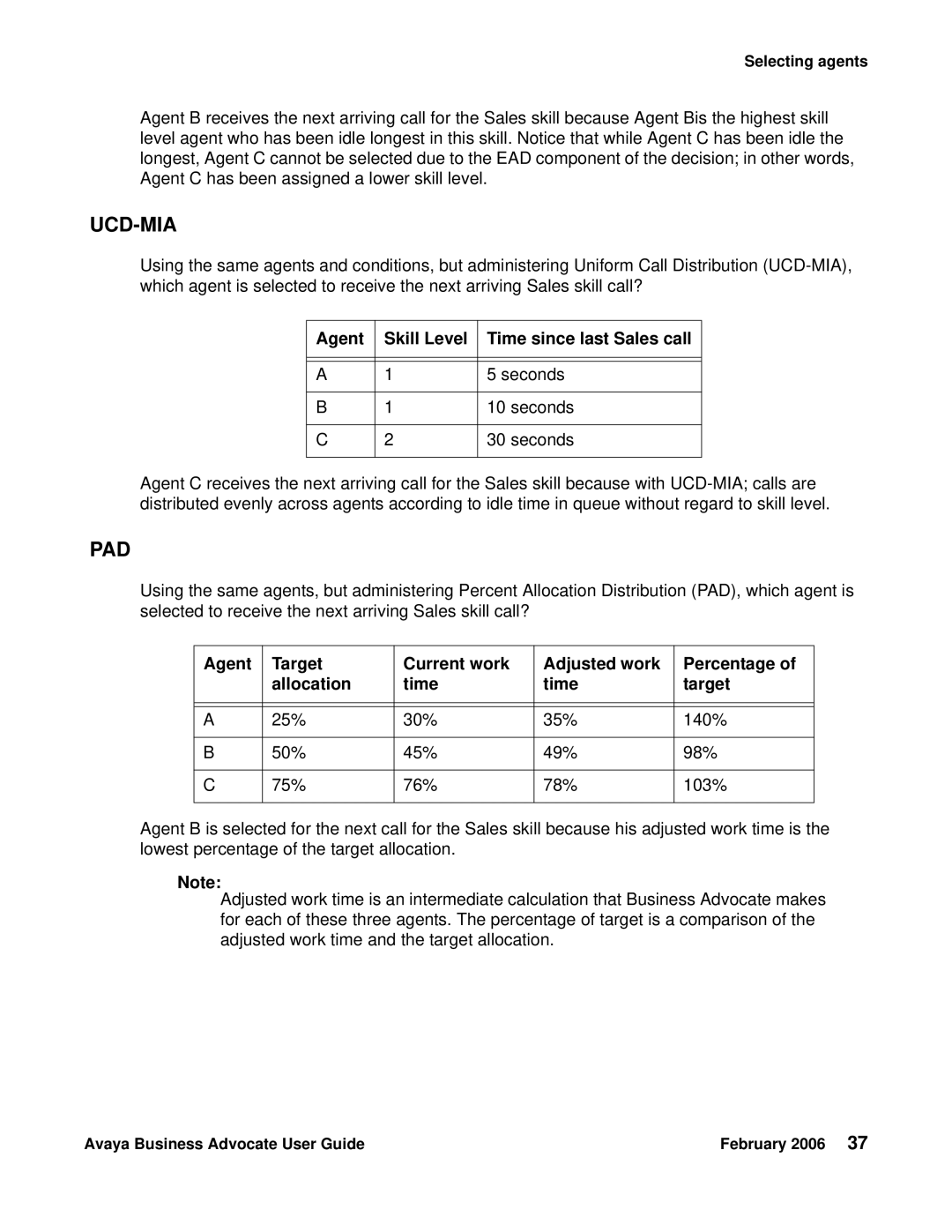Selecting agents
Agent B receives the next arriving call for the Sales skill because Agent Bis the highest skill level agent who has been idle longest in this skill. Notice that while Agent C has been idle the longest, Agent C cannot be selected due to the EAD component of the decision; in other words, Agent C has been assigned a lower skill level.
UCD-MIA
Using the same agents and conditions, but administering Uniform Call Distribution
Agent | Skill Level | Time since last Sales call |
|
|
|
|
|
|
A | 1 | 5 seconds |
|
|
|
B | 1 | 10 seconds |
|
|
|
C | 2 | 30 seconds |
|
|
|
Agent C receives the next arriving call for the Sales skill because with
PAD
Using the same agents, but administering Percent Allocation Distribution (PAD), which agent is selected to receive the next arriving Sales skill call?
Agent | Target | Current work | Adjusted work | Percentage of |
| allocation | time | time | target |
|
|
|
|
|
|
|
|
|
|
A | 25% | 30% | 35% | 140% |
|
|
|
|
|
B | 50% | 45% | 49% | 98% |
|
|
|
|
|
C | 75% | 76% | 78% | 103% |
|
|
|
|
|
Agent B is selected for the next call for the Sales skill because his adjusted work time is the lowest percentage of the target allocation.
Note:
Adjusted work time is an intermediate calculation that Business Advocate makes for each of these three agents. The percentage of target is a comparison of the adjusted work time and the target allocation.
Avaya Business Advocate User Guide | February 2006 37 |
